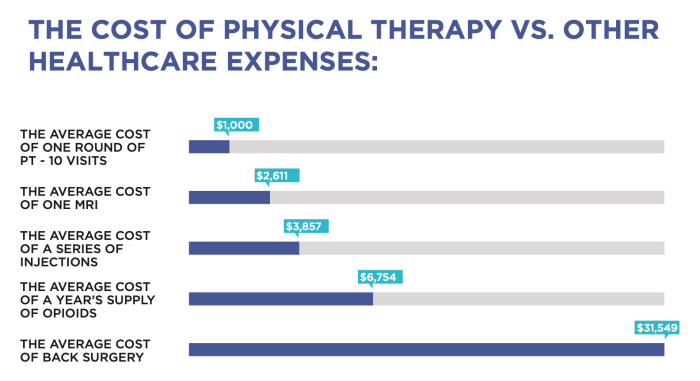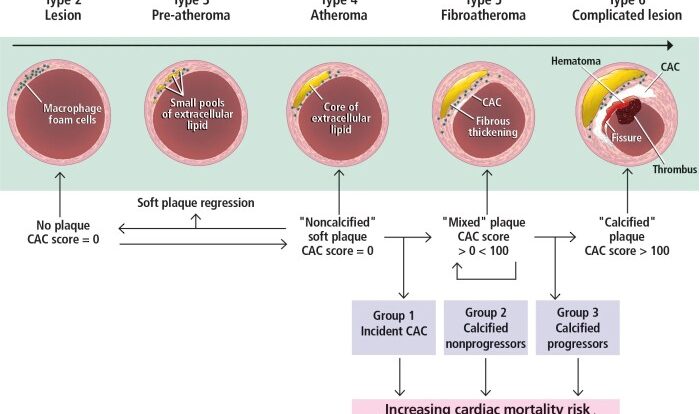What does a physical therapist make a year? This question sets the stage for an engaging exploration into the financial prospects of physical therapists. From the outset, this article aims to provide a comprehensive overview of the topic, offering valuable insights into the factors that influence salary expectations within this rewarding field.
Throughout this discussion, we will delve into the intricacies of physical therapist salaries, examining the impact of experience, location, specialization, educational background, and job responsibilities. By shedding light on these key elements, we hope to empower readers with the knowledge they need to make informed career decisions.
Income Range

Physical therapists can expect a wide range of salaries depending on their experience, location, and specialization. According to the U.S. Bureau of Labor Statistics, the median annual salary for physical therapists in May 2022 was $95,620. The lowest 10 percent earned less than $62,430, and the highest 10 percent earned more than $134,980.
Factors Influencing Salary Variations
Several factors can influence salary variations among physical therapists. These include:
- Experience:Physical therapists with more experience generally earn higher salaries than those with less experience.
- Location:Physical therapists working in metropolitan areas typically earn higher salaries than those working in rural areas.
- Specialization:Physical therapists who specialize in certain areas, such as orthopedics or neurology, may earn higher salaries than those who work in general practice.
- Education:Physical therapists with a doctorate degree may earn higher salaries than those with a master’s degree.
- Certification:Physical therapists who are certified by the American Board of Physical Therapy Specialties may earn higher salaries than those who are not certified.
Industry Outlook
The job market for physical therapists is currently experiencing strong growth, driven by an aging population and increasing awareness of the benefits of physical therapy. The Bureau of Labor Statistics projects that employment of physical therapists will grow 28% from 2020 to 2030, much faster than the average for all occupations.
This growth is expected to continue in the future, as the demand for physical therapy services increases due to the rising number of people with chronic conditions, such as arthritis and heart disease. In addition, the growing emphasis on preventive care and wellness is also contributing to the demand for physical therapists.
Emerging Trends and Areas of Opportunity
There are several emerging trends and areas of opportunity in the field of physical therapy. These include:
- Telehealth:The use of telehealth to provide physical therapy services is becoming increasingly popular, as it allows patients to receive care from the comfort of their own homes.
- Virtual reality:Virtual reality is being used to create immersive and interactive rehabilitation experiences for patients.
- Wearable technology:Wearable technology is being used to track patient progress and provide real-time feedback.
- Data analytics:Data analytics is being used to improve the quality and efficiency of physical therapy care.
These trends are expected to continue to shape the field of physical therapy in the years to come, and they represent new opportunities for physical therapists to provide innovative and effective care to their patients.
Compensation Structure
Physical therapists can receive compensation in various forms, including base salary, bonuses, and benefits packages. The specific compensation structure may vary depending on factors such as experience, location, and employer.
Base Salary, What does a physical therapist make a year
Base salary is the fixed amount of money a physical therapist earns per year. This is typically the largest component of a physical therapist’s compensation package.
On average, physical therapists earn a comfortable living, with salaries varying based on experience, location, and specialization. For instance, physical therapists in Ohio earn a median hourly wage that aligns with the national average. Overall, physical therapy remains a rewarding career that offers both financial stability and the opportunity to make a meaningful impact on patients’ lives.
Bonuses
Bonuses are additional payments that are awarded based on performance or other factors. Physical therapists may receive bonuses for meeting or exceeding productivity goals, providing excellent patient care, or participating in special projects.
Benefits Packages
Benefits packages typically include health insurance, dental insurance, vision insurance, retirement savings plans, and paid time off. The value of a benefits package can vary significantly from employer to employer.
Negotiation
Physical therapists can negotiate their salary and benefits package with their employer. It is important to be prepared for negotiation and to have a clear understanding of your worth in the job market.
Location and Specialization
Location and specialization significantly influence physical therapist salaries. The cost of living, job availability, and demand for physical therapy services vary across different geographical areas.
Highest-Paying States and Cities
According to the Bureau of Labor Statistics (BLS), the states with the highest mean annual salaries for physical therapists in May 2021 were:
- California: $124,480
- Hawaii: $123,530
- Massachusetts: $121,970
- New York: $121,720
- Washington: $118,390
Within these states, metropolitan areas such as San Francisco, Los Angeles, New York City, and Boston offer even higher salaries due to the high demand for physical therapy services and the competitive job market.
Impact of Specialization
Physical therapists who specialize in certain areas of practice, such as orthopedics or sports medicine, typically earn higher salaries. According to the American Physical Therapy Association (APTA), physical therapists with the following specializations earn higher-than-average salaries:
- Orthopedics: $97,500 per year
- Sports medicine: $95,000 per year
- Neurology: $92,000 per year
- Cardiopulmonary: $90,000 per year
Specialization requires additional training and certification, which can increase the value of a physical therapist’s services and command a higher salary.
A physical therapist’s annual salary can vary depending on factors such as experience and location. On the other hand, STNAs in Ohio typically earn an hourly wage, which can also fluctuate based on similar factors. If you’re interested in exploring the earning potential of STNAs in Ohio, you can refer to the following article: how much do stna make an hour in ohio . Returning to the topic of physical therapists, their annual income can range from approximately $80,000 to $120,000.
Educational Background and Certification
The level of education and certifications play a significant role in determining the salary of a physical therapist.
Physical therapists with a doctoral degree typically earn higher salaries than those with a master’s degree. In addition, physical therapists who have obtained specialized certifications, such as those in orthopedics or sports medicine, can also earn higher salaries.
Certifications
Certifications are voluntary credentials that demonstrate a physical therapist’s knowledge and skills in a specific area of practice.
- The American Board of Physical Therapy Specialties (ABPTS) offers a variety of certifications for physical therapists, including:
- Orthopedic Clinical Specialist (OCS)
- Sports Clinical Specialist (SCS)
- Neurological Clinical Specialist (NCS)
Physical therapists who hold these certifications have demonstrated a high level of knowledge and skill in their chosen area of practice, which can lead to higher earning potential.
Job Responsibilities and Experience: What Does A Physical Therapist Make A Year
Physical therapists are responsible for assessing, diagnosing, and treating movement disorders and injuries. They work with patients of all ages, from infants to the elderly, and in a variety of settings, including hospitals, clinics, schools, and private practices.
Typical job responsibilities of a physical therapist include:
- Evaluating patients’ physical condition and medical history
- Developing and implementing treatment plans
- Providing hands-on therapy, such as massage, stretching, and exercises
- Educating patients on proper body mechanics and injury prevention
- Collaborating with other healthcare professionals, such as physicians and nurses
Experience and skillset can significantly influence a physical therapist’s salary. Physical therapists with more experience and specialized skills, such as in orthopedics, sports medicine, or neurology, typically earn higher salaries.
Specific Skills that Command Higher Compensation
- Advanced clinical skills, such as manual therapy, dry needling, and therapeutic exercise
- Certifications in specialized areas, such as orthopedics, sports medicine, or neurology
- Experience in treating complex or high-risk patients
- Strong communication and interpersonal skills
- Ability to work independently and as part of a team
Closing Summary
In conclusion, the annual salary of a physical therapist is a multifaceted consideration that encompasses a wide range of variables. By understanding the factors that influence earnings, physical therapists can position themselves for success and maximize their financial potential. Whether you are a seasoned professional or just starting your journey in this field, we hope this guide has provided you with valuable insights into the financial aspects of a physical therapist’s career.
Helpful Answers
What is the average salary for a physical therapist?
According to the Bureau of Labor Statistics, the median annual salary for physical therapists in the United States is $95,620.
What factors influence a physical therapist’s salary?
Several factors can influence a physical therapist’s salary, including experience, location, specialization, educational background, and job responsibilities.
What are the highest-paying states for physical therapists?
The highest-paying states for physical therapists are California, New York, Massachusetts, New Jersey, and Connecticut.
What are the benefits of working as a physical therapist?
Physical therapists enjoy a wide range of benefits, including competitive salaries, job security, flexible work hours, and the opportunity to make a positive impact on people’s lives.





